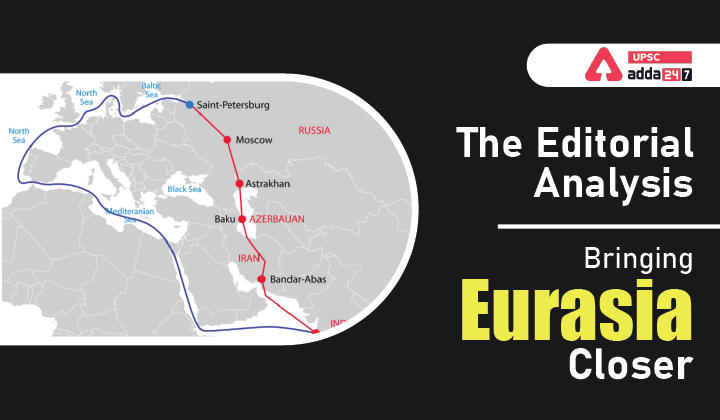Table of Contents
International North South Transport Corridor (INSTC)- Relevance for UPSC Exam
- GS Paper 2: International Relations- Bilateral, regional and global groupings and agreements involving India and/or affecting India’s interests.
International North South Transport Corridor (INSTC) in News
- Recently, RailFreight.Com reported that two 40-ft containers of wood laminate sheets crossed the Caspian Sea from Russia’s Astrakhan port, and eventually reach Nhava Shiva port in Mumbai, marking the beginning of INSTC.
- The ships crossed the Caspian Sea from Russia’s Astrakhan port, entered Iran’s Anzali port, continued their southward journey towards the Arabian Sea, entered the waters at Bandar Abbas and eventually reach Nhava Shiva port in Mumbai.
International North South Transport Corridor (INSTC)
- Background: The legal framework for the INSTC is provided by a trilateral agreement signed by India, Iran and Russia at the Euro-Asian Conference on Transport in 2000.
- About: International North South Transport Corridor (INSTC) is a 7,200-km multi-modal transport corridor that combines road, rail and maritime routes connecting Russia and India via central Asia and Iran.
- The INSTC is expected to consolidate the emerging Eurasian Free Trade Area.
- INSTC Members: India, Iran and Russia are the founding members of the International North South Transport Corridor (INSTC).
- Later, Kazakhstan, Belarus, Oman, Tajikistan, Azerbaijan, Armenia and Syria have signed instruments of accession to become members of the INSTC.
- Significance of INSTC
- Once fully operational, the INSTC is expected to reduce freight costs by 30% and journey time by 40% in comparison with the conventional deep sea route via the Suez Canal.
- Indeed, the need for an alternative route was deeply felt last year, when the Ever Given container ship was stuck in the Suez, halting maritime traffic between the Mediterranean Sea and the Red Sea.
- India being founding member of both QUAD and INSTC, shows a shift in Indian foreign policy from non-alignment to multi-alignment.
Importance of INSTC for India
- India’s investment in the INSTC is exemplified by its involvement in Iran’s Chabahar port and the construction of a 500-km Chabahar-Zahedan railway line.
- Once completed, this infrastructure will allow India access to Afghanistan and central Asia, a prospect strengthened by the Taliban government’s support for the project.
- India can now bypass Pakistan to access Afghanistan, central Asia and beyond.
- INSTC can shape a north-south transport corridor that can complement the east-west axis of the China-led Belt and Road Initiative (BRI).
- The INSTC offers a platform for India to closely collaborate with Russia, Iran and Central Asian republics.
Conclusion
- As a transcontinental multi-modal corridor that aims to bring Eurasia closer together, the INSTC is a laudable initiative in its own right. That it helps India consolidate its multi-alignment strategy sweetens the deal.
International North South Transit Corridor




 TSPSC Group 1 Question Paper 2024, Downl...
TSPSC Group 1 Question Paper 2024, Downl...
 TSPSC Group 1 Answer key 2024 Out, Downl...
TSPSC Group 1 Answer key 2024 Out, Downl...
 UPSC Prelims 2024 Question Paper, Downlo...
UPSC Prelims 2024 Question Paper, Downlo...
